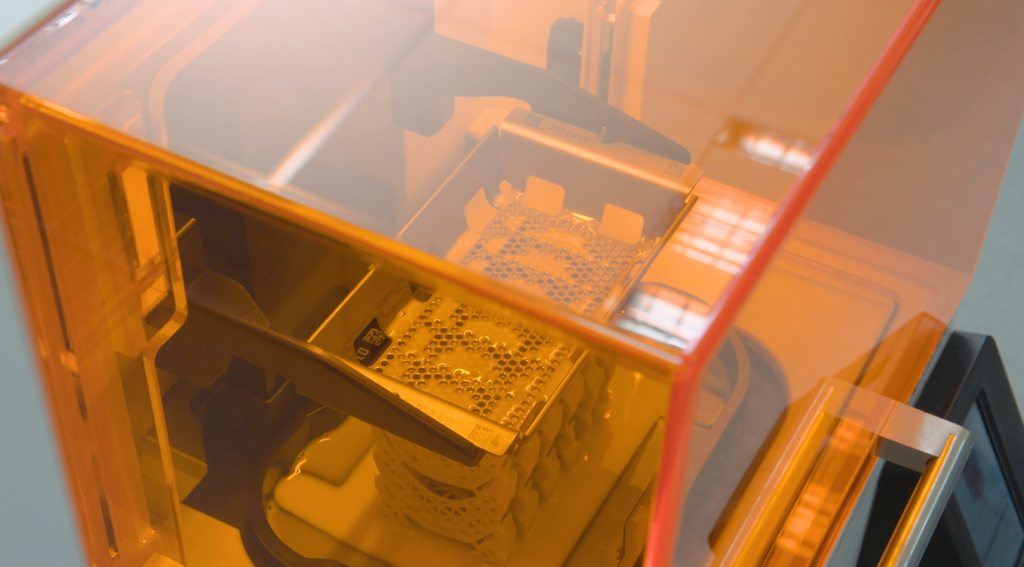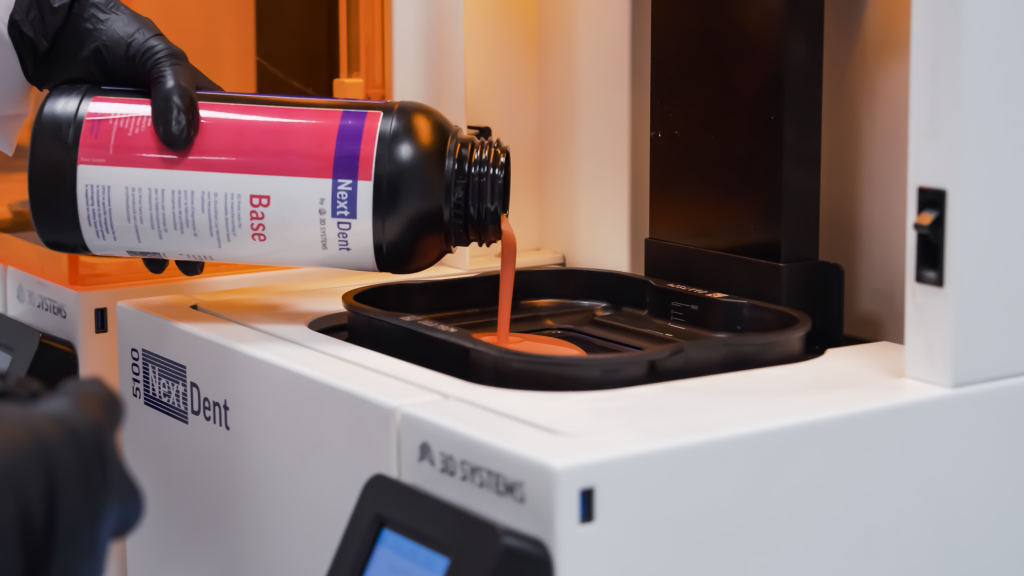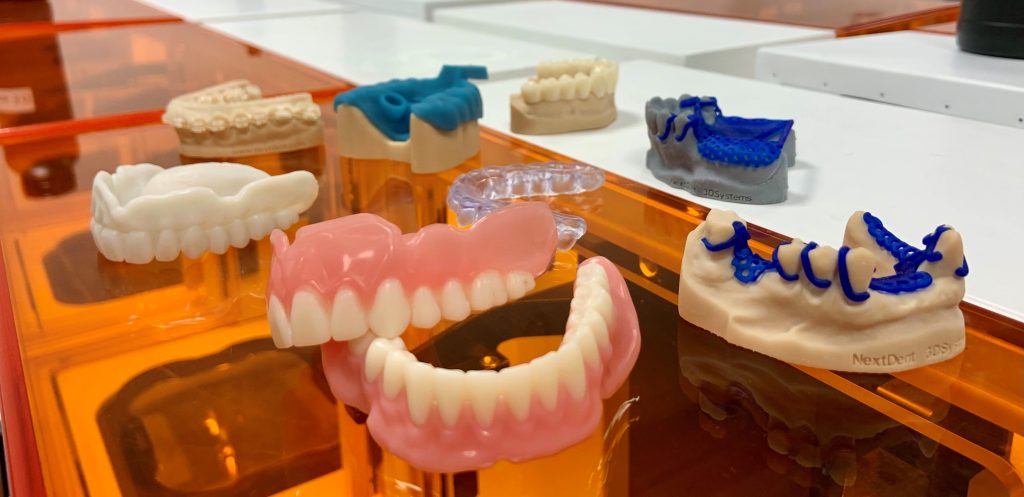In a recent discussion, Chuck Stapleton, the Vice President and General Manager for Dental at 3D Systems, delineated the firm’s strategy for advancing 3D printing to mainstream use for dental production. The dialogue underscored the significance of working with enterprises ranging from large dental producers like Glidewell to maintaining relationships with various-sized labs that constitute a substantial market portion.
Stapleton highlighted their collaboration with the leading provider of clear aligners, Align Technology, acknowledging the pandemic-induced challenges yet emphasizing a positive market outlook. He stated, “They’re seeing growth currently.” Furthermore, he mentioned the optimistic market forecasts indicating a return to a steady growth trend.
Delving into specifics, Stapleton shed light on 3D Systems’ extensive portfolio tailored for dentistry. He mentioned applications ranging from orthodontics to prosthetics, showcasing their versatility in creating dental models, crowns, dentures, nightguards, surgical guides, and more. Particularly, he elucidated how 3D Systems technology facilitates precise bracket placements in orthodontics and enables production of the final prosthetic for the patient directly from 3D printing.
Moreover, he pointed out their capability to integrate with legacy workflows and provide 3D printing solutions with metal for crowns and partial dentures, reflecting a comprehensive approach to meeting the diverse needs of the dental sector.
Voting closes next week in the 2023 3D Printing Industry Awards.
Accelerated Adoption of 3D Printing Predicted in Dental Sector: A Glimpse into 3D Systems’ Strategy
Stapleton shared insights into the evolving trajectory of additive technology in the dental sector. Reflecting on his experiences, he acknowledged the initial apprehension surrounding 3D printing technology in dental labs a decade ago. However, he highlighted a paradigm shift, “It’s going to accelerate now that 3D printing is accepted in the dental space. The majority of dental labs now have 3D printers.”
A significant driver behind this accelerated adoption is the aging workforce in dental labs, with the average age of a dental technician inching up to 56 this year. The diminishing manual labor force is prompting a greater reliance on digital technology to fill the gap, foreseen by Stapleton as a catalyst for broader acceptance and integration of 3D printing solutions.
Delving into product applications, Stapleton envisions a substantial evolution in the permanent crown and denture spaces, anticipating a “revolution,” particularly in denture applications in the near term. He also hinted at a gradual expansion into other prosthetic areas and eventually into the implant space, albeit on a longer timeline.

Durable 3D Printed Crowns and Technological Prowess
The longevity and durability of 3D printing-enabled dental applications is a natural question to ask. Chuck Stapleton says that 3D printed crowns, when done correctly, have a longevity akin to traditional crowns, lasting “20 years plus.” Stapleton emphasized, “It’s a function of the 3D printing materials”, underscoring the importance of delivering the right mechanical properties in achieving enduring restorations.
Stapleton acknowledged that 3D printing dental applications have vastly expanded, now encompassing the production of crowns and dentures. He expressed that instead of traditional manual methods, the digital route results in “a more accurate product,” which ultimately enhances patient comfort. Bypassing the “compromises in design” necessitated by manual methods.
Highlighting a pivotal advancement, the 3D Systems acquisition of NextDent was mentioned as a significant milestone for 3D Systems. This strategic move augmented their materials portfolio, propelling the firm further into the dental sector with enriched resources. The integration signposts 3D Systems’ commitment to fostering innovation and delivering precise, high-quality dental solutions via additive manufacturing.
The integration of Figure 4 technology within the dental workflow was also described as a “very significant” milestone for the company. He explained that this integration positioned 3D Systems uniquely in the market by marrying advanced printing technology with a robust material portfolio. Stapleton noted, “You pour your material into the tray, and it prints, and you know it’s just going to work.”
Elaborating on the differentiation this integration brings to 3D Systems in comparison to competitors, he emphasized the advantage of having both the hardware and material optimized under one roof. He pointed out the common industry challenge where companies often grapple with third-party resins and printers, hoping they work coherently. “Additionally, the experience and knowledge coming from being a hardware developer as well, brings additional value to the resin integration on other 3D Printers. This makes the reliability of NextDent resins on validated partners hardware as close as possible to the NextDent complete eco-system,” explained Stapleton. This integrated approach not only eliminates such uncertainty but also ensures global support from 3D Systems in case of any issues, avoiding the typical “finger-pointing” dilemma of whether the material or the printer is at fault.
Addressing the current limitations of 3D printing in the dental sector, Stapleton identified market acceptance as a notable hurdle. Despite the proven efficacy among early adopters, persuading the broader market about the reliability of 3D printed dental solutions remains a challenge. He also mentioned technology constraints with certain types of technologies like DLP (Digital Light Processing) which is confined to single material printing. However, he was optimistic about overcoming such limitations, particularly highlighting 3D Systems’ jetting technology as a solution to some of these challenges.

3D Systems Outlines Strategy Amid Soaring Competition in Dental 3D Printing Market
In light of the escalating competition in the dental 3D printing market, 3D Systems has outlined a strategy to sustain a competitive edge. Stapleton articulates a multi-pronged approach. He underscores a “relentless focus on engineering disruptive materials,” exploring fresh business models and partnerships, and tapping into “previously underutilized technologies such as jetting” to unveil new applications.
Addressing the burgeoning concern over sustainability, 3D Systems is committed to ensuring its products and processes are eco-friendly. Stapleton states, “All our biomedical materials undergo rigorous testing to ensure they are not toxic for the patient and therefore are not harmful to the environment.” Furthermore, they offer refurbishment programs to prolong the lifespan of their printers.
In a financial foresight, he cites a Markets & Markets report, projecting the total Digital Dental segment to reach $12.2 billion by 2028, growing at a CAGR of 10.9%. Moreover, the Total Addressable Market (TAM) for 3D printing in the dental industry is forecasted to hit $1.7 billion in 2023. This financial outlook demonstrates the substantial growth potential and the sizable market 3D Systems is vying to command.
Of course, there are challenges and opportunities ahead in the dental sector for the next five years. On one hand, the stringent Medical Device Regulation (MDR) requirements in the European Union pose a significant challenge, decelerating the pace of product market entry. Stapleton mentions, “the MDR requirements in the EU are significantly slowing down the pace at which products can be brought to market.”
Conversely, the growing acceptance of utilizing 3D printing for final prosthetic delivery to patients unveils a vast landscape of opportunities. This trend propels 3D Systems into a favorable position to harness its “comprehensive solution portfolio of technology and materials” to explore and develop new dental applications. In this domain, only a handful of companies are distinctly positioned.
Looking ahead, Stapleton is optimistic about the transformative impact of 3D printing on dental care delivery. He envisions a future where dental product production will decentralize, moving closer to the patient, which will shorten wait times and enhance service responsiveness. This shift is expected to benefit underdeveloped regions, opening new avenues for dental care access. Moreover, the superior accuracy of 3D printing technology when crafting dental prosthetics compared to traditional analog methods will translate to a better fit for patients and potentially fewer office visits, enhancing the overall patient experience.
Through a lens of anticipation, 3D Systems aims to navigate through regulatory challenges while capitalizing on the burgeoning acceptance of 3D printing in prosthetic dentistry, striving for a future where dental care is more accessible and patient-centric.

Subscribe to the 3D Printing Industry newsletter to keep up to date with the latest 3D printing news. You can also follow us on Twitter, like our Facebook page, and subscribe to the 3D Printing Industry Youtube channel to access more exclusive content.
Are you interested in working in the additive manufacturing industry? Visit 3D Printing Jobs to view a selection of available roles and kickstart your career.
Featured image shows High Precision Stacked Printing of Orthodontic models on NextDent 5100. Photo via 3D Systems.



